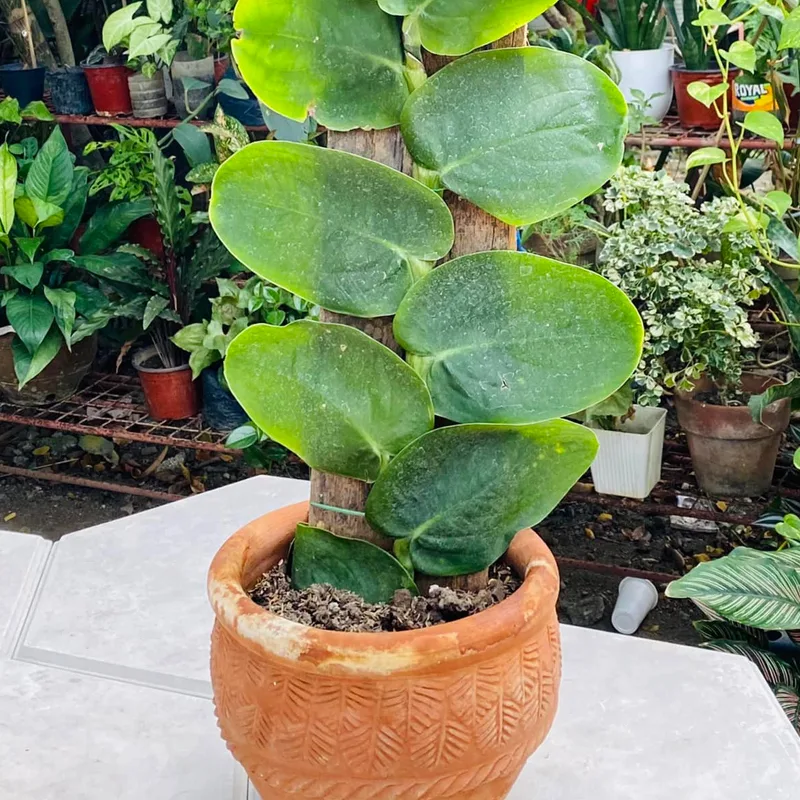
What is Agave Blue Flame?
As a plant enthusiast, I’m always on the lookout for unique and low-maintenance additions to my garden. That’s where the Agave Blue Flame comes in. This stunning succulent has captivated me with its vibrant blue-green foliage and dramatic, flame-like form. It’s a conversation starter and a guaranteed head-turner in any landscape.
Over the past few years, I’ve been growing this beauty in my own garden, and I’m here to share my experience and everything I’ve learned about the Agave Blue Flame. Whether you’re a seasoned gardener or just starting out, this guide will equip you with the knowledge to cultivate this captivating succulent.
304 Species in Genus Agave
Agave Blue Flame vs Blue Glow
The Agave Blue Flame’s slender, gracefully arching leaves have a striking blue-gray hue that intensifies under sunlight, giving it a serene, almost ethereal appearance in my garden. In contrast, the Blue Glow boasts a more compact rosette with broader leaves that exhibit a deeper blue-green coloration, creating a bolder presence in any desert-themed landscape.
Agave Blue Flame vs Foxtail
The Agave Blue Flame’s unique rosette shape and intricate leaf patterns add a sculptural elegance to my garden, especially when backlit by the setting sun, highlighting its blue-gray tones and creating a captivating silhouette. On the other hand, the Foxtail Agave‘s densely packed leaves form a symmetrical fountain-like shape, which, with its sharp spines and striking leaf margins, brings a robust, almost architectural element to my outdoor space.
How Big Do Blue Flame Agave Get?
Before diving into the care specifics, let’s talk about size. Agave Blue Flame is a slow grower, but it can reach a respectable size over time. Here’s what you can expect:
- Mature Height: A mature Blue Flame Agave can reach a height of around 2.5 feet (76 cm).
- Mature Width: It can spread to a width of about 3 feet (91 cm).
This makes it a perfect choice for adding a touch of drama to borders, container gardens, or as a focal point in your landscape design. Remember, slow growth also means less maintenance, which is a bonus for busy gardeners like myself.
How to Care for Blue Flame Agave?
The beauty of the Agave Blue Flame lies in its low-maintenance nature. Here are some key things to keep in mind for happy and healthy growth:
- Sunlight: Agave Blue Flame thrives in full sun. Aim for at least 6-8 hours of direct sunlight per day.
- Soil: This succulent prefers well-draining soil. Opt for a cactus mix or create your own by mixing potting soil with perlite or sand.
- Watering: Blue Flame Agave is drought tolerant. Water deeply when the soil feels completely dry to the touch. Avoid overwatering, as this can lead to root rot.
- Fertilizer: Fertilizing is not necessary for this plant. In fact, too much fertilizer can harm it.
Winter Protection (Optional)
While the Agave Blue Flame is considered cold hardy down to around 20°F (-6°C), if you live in a region with harsher winters, you can offer some protection. Here are a few options:
- Mulch: Apply a layer of mulch around the base of the plant in late fall to help insulate the roots.
- Covering: In extreme cold spells, you can temporarily cover the plant with burlap or frost cloth. Remember to remove the covering once the danger of frost has passed.
Potential Problems with Agave Blue Flame
There are few problems associated with Agave Blue Flame. However, here are two things to watch out for:
- Overwatering: As mentioned earlier, overwatering is the main threat to this succulent. Ensure proper drainage and adjust your watering habits based on the climate.
- Agave Snout Weevil: This is a rare pest that can damage agave plants. Look for signs of chewed leaves and treat with insecticidal soap if necessary.
What to Plant with Agave Blue Flame?
The dramatic form and vibrant color of the Agave Blue Flame make it a versatile addition to various planting schemes. Here are some ideas for companion plants:
- Low-growing succulents: Echeveria, Sedum, and Sempervivum complement the Blue Flame’s form and add textural contrast.
- Ornamental grasses: The movement of grasses like Pennisetum or Miscanthus creates a dynamic duo with the structured form of the agave.
- Flowering perennials: Add a splash of color with drought-tolerant perennials like Salvia, Gaillardia, or Coreopsis.
By considering the size, color, and texture of your chosen companions, you can create a stunning and low-maintenance garden that thrives with minimal effort.
Where to Buy Agave Blue Flame?
Finding Agave Blue Flame is relatively easy. Here are a few options:
- Local nurseries: Many nurseries carry a variety of succulents, including Agave Blue Flame.
- Online retailers: Several online retailers specialize in succulents and offer Agave Blue Flame for purchase.
- Plant swaps or gardening clubs: Connect with other plant enthusiasts and see if anyone has pups (baby agaves) to share.
No matter where you choose to purchase your Agave Blue Flame, ensure it comes from a reputable source and looks healthy. With a little planning and the right care, you can enjoy the striking beauty of this succulent for years to come.
If i die, water my plants!



